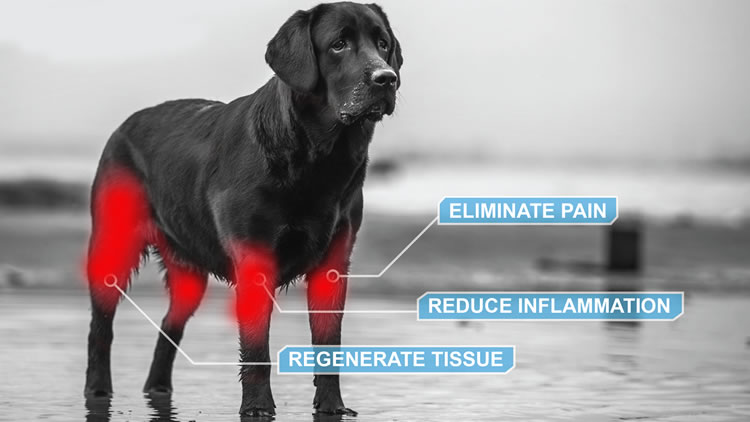Stem Cell Therapy from Willowbend Animal Hospital of Wichita, KS
Stem cell therapy offers patients an alternative treatment for pain, healing, and compassionate use.


What is MediVet Stem Cell Therapy?
Stem cells are powerful healing cells in your body that can become other types of cells. There are many adult stem cells in fat tissue, however they are asleep. MediVet’s stem cell therapy allows your vet to isolate stem cells from an animal’s own fat tissue, wake them up, and re-inject them directly into damaged areas. For example, in the case of arthritis, stem cells become new cartilage cells, thus reducing pain and increasing mobility.
What is so great about Stem Cell Therapy?
Stem cells treat the source of the problem by becoming new tissue to replace damaged tissue. Other treatments, such as NSAIDs, merely attempt to reduce symptoms. The treatment is very low risk, because it uses the animal’s own stem cells. With MediVet’s technology, over 95% of animals treated show improvement.
Is it safe?
Yes, this procedure is very safe. The biggest risk is using anesthetic, to remove the fat tissue. On a typical dog, this is easier than a spay, and the fat is collected in about 15 minutes by your vet. Processing the sample is done carefully by a highly trained MediVet representative (or by a lab tech carefully trained by that representative). In the thousands of animals treated, we have not observed any negative side-effects from MediVet’s stem cell therapy.
What happens to my pet when they come in for stem cell therapy?
First, your vet will put your pet under general anesthetic. Then, he/she will make a small incision and collect 2-4 tablespoons of fat (either in the belly or behind the shoulder blades). Since your pet is under anesthetic, this is a great opportunity to do anything else needed – spay/neuter, or dental for example. Your local, highly trained MediVet representative will then process the sample, right in the clinic, using MediVet equipment. After about 3 hours, the cells are ready for injection into areas of damage. In addition, some cells are administered IV. For the administration step, your pet will either not sedated at all, locally anesthetized with ethyl chloride spray, or lightly sedated, depending on what’s best for your pet. You can pick up your pet later that same day.
What conditions are typically treatment with stem cell therapy?
- Osteoarthritis (hip dysplasia, degenerative joint disease, calcifications, common degeneration and inflammation)
- Soft tissue injuries (cruciate injuries, tears, ruptures, inflammation)
- Fractures
- Compassionate use (degenerative myelopathy, feline gingivitis, end-stage renal disease, liver and kidney failure, allergy, auto-immune, inflammatory bowel disease, pulmonary fibrosis, IMHA, atopy, and spine trauma)
